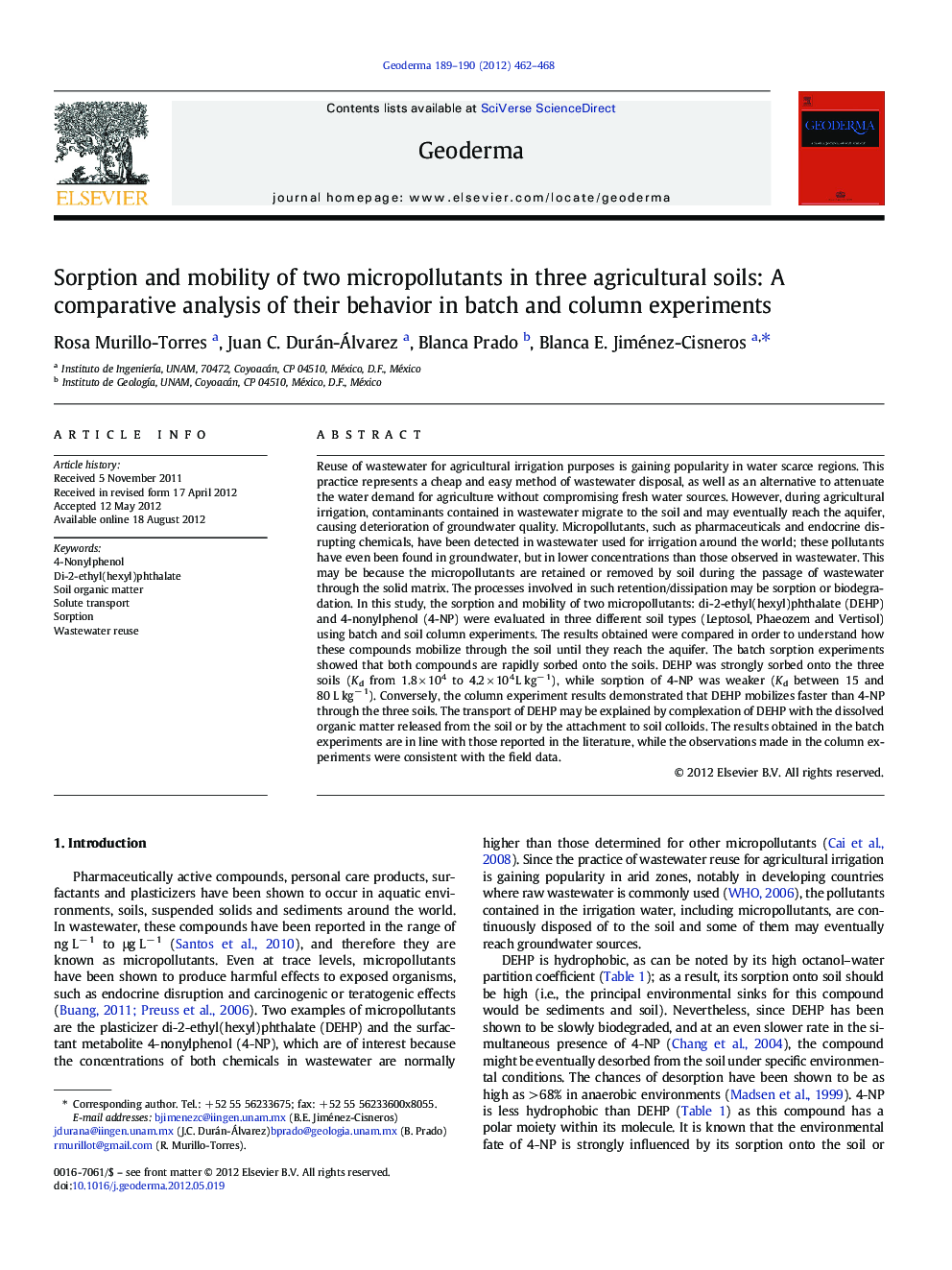| کد مقاله | کد نشریه | سال انتشار | مقاله انگلیسی | نسخه تمام متن |
|---|---|---|---|---|
| 4573620 | 1629493 | 2012 | 7 صفحه PDF | دانلود رایگان |

Reuse of wastewater for agricultural irrigation purposes is gaining popularity in water scarce regions. This practice represents a cheap and easy method of wastewater disposal, as well as an alternative to attenuate the water demand for agriculture without compromising fresh water sources. However, during agricultural irrigation, contaminants contained in wastewater migrate to the soil and may eventually reach the aquifer, causing deterioration of groundwater quality. Micropollutants, such as pharmaceuticals and endocrine disrupting chemicals, have been detected in wastewater used for irrigation around the world; these pollutants have even been found in groundwater, but in lower concentrations than those observed in wastewater. This may be because the micropollutants are retained or removed by soil during the passage of wastewater through the solid matrix. The processes involved in such retention/dissipation may be sorption or biodegradation. In this study, the sorption and mobility of two micropollutants: di-2-ethyl(hexyl)phthalate (DEHP) and 4-nonylphenol (4-NP) were evaluated in three different soil types (Leptosol, Phaeozem and Vertisol) using batch and soil column experiments. The results obtained were compared in order to understand how these compounds mobilize through the soil until they reach the aquifer. The batch sorption experiments showed that both compounds are rapidly sorbed onto the soils. DEHP was strongly sorbed onto the three soils (Kd from 1.8 × 104 to 4.2 × 104 L kg− 1), while sorption of 4-NP was weaker (Kd between 15 and 80 L kg− 1). Conversely, the column experiment results demonstrated that DEHP mobilizes faster than 4-NP through the three soils. The transport of DEHP may be explained by complexation of DEHP with the dissolved organic matter released from the soil or by the attachment to soil colloids. The results obtained in the batch experiments are in line with those reported in the literature, while the observations made in the column experiments were consistent with the field data.
► DEHP and 4-NP may be removed by sorption on the soil during irrigation.
► Soil adsorption capacity was Vertisol > Phaeozem > Leptosol.
► Retardation factor for 4-NP was higher than for the DEHP in the three study soils.
► A possible migration of DEHP through the soil was detected.
► Column results were consistent with field data but not batch test results.
Journal: Geoderma - Volumes 189–190, November 2012, Pages 462–468